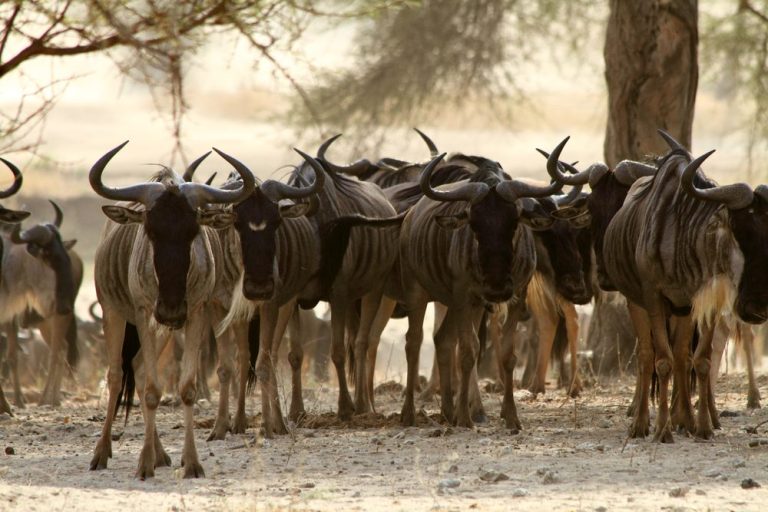TARANGIRE NATIONAL PARK
Home Of the Elephants
Location Of Tarangire National Park
Slightly off the popular northern Tanzania Safari Circuit, the park lies between the meadows of Masai Steppe to the south east and the lakes of the Great Rift Valley to the north and west. Within the northern part of Tarangire is the permanent River Tarangire also known as the life-line of the park particularly in the dry season when most of the region is totally dry. This flows northwards until it exits the park in the northwestern corner to pour into Lake Burungi. There are a number of wide swamps which dry into green plains during the dry season in the south.
During you Safari in Tarangire, You are highly recommended to stay for a couple of days especially in the south of the park which offers a less crowded safari experience and gives you the opportunity to enjoy an authentic African feel of the Tanzania’s countryside.

Tarangire Vegetation
The permanent Tarangire River is the most dominant feature here and it’s after this river that the park was named. there are a number of large swamps that feed off some of its tributaries however, these are usually dry for most of the year but get very impassable during the rains .The Tarangire park is usually very dry, in fact drier than the Serengeti, however its vegetation is much more green especially with lots of elephant grass, vast areas with mixed acacia woodlands and some of the wonderful ribbons of the aquatic forest not to forget the giant baobab tree that can live up to 600 years storing between 300 and 900 liters of water
Tarangire Wildlife Migration
Every year during the dry season from June to November Tarangire hosts a wildlife migration which is not as dramatic as the Wildebeest Migration in the Serengeti, but receives a somewhat large number of animals. As most of this part of the country is dry, the Tarangire River remains the only source of water and consequently attracts large numbers of wildebeests, elephants, gazelles, zebras and hartebeest, buffaloes plus various predators like lions that come to drink and graze around the river banks. during the rain months of November to May, The zebras as well as large herds of wildebeests move into the north-western direction towards the Rift Valley floor amongst the large numbers of animals that spread across the large open areas of the Masaai Steppe and dispersing all the way to Lake Manyara.


Animals Of Tarangire National Park
Tarangire and you will be able to encounter various animals. This park is home to one of the largeset elephant populations in Africa with several herds of up to 300 members per herd. In addition, there are large numbers of impalas, elands, buffaloes, giraffes, Bohor reedbuck, Coke’s hartebeest, Thompson’s gazelle, the greater and lesser kudu and on rare occasions, the unusual gerenuk and fringe –eared Oryx are also seen. A few black rhinos are also thought to be still present in this park. You will obviously see big numbers of elephants gather here as well as the wildebeests and zebras. Among the other common animals in the Tarangire are the leopards, lions, hyenas, and cheetah that seem to be popular within the southern open areas. The wild dogs are only seen once in a while
The birds within the Tarangire are also quite many, there are over 545 species that have been identified here. The stunning yellow collared lovebirds and the shy starlings are in plenty here in addition to other species.
